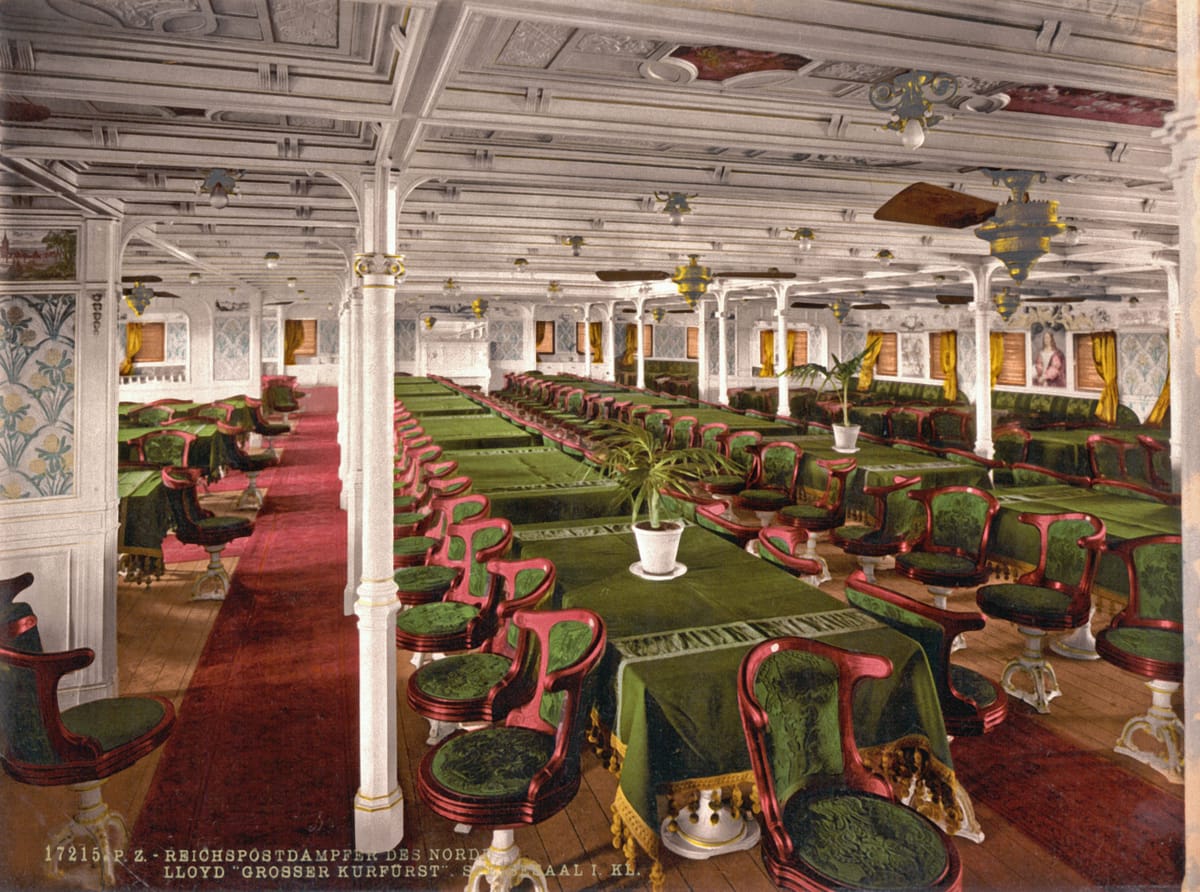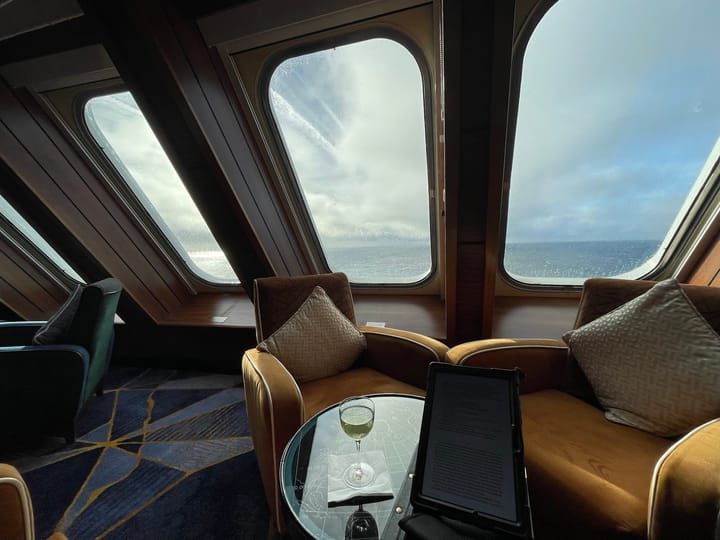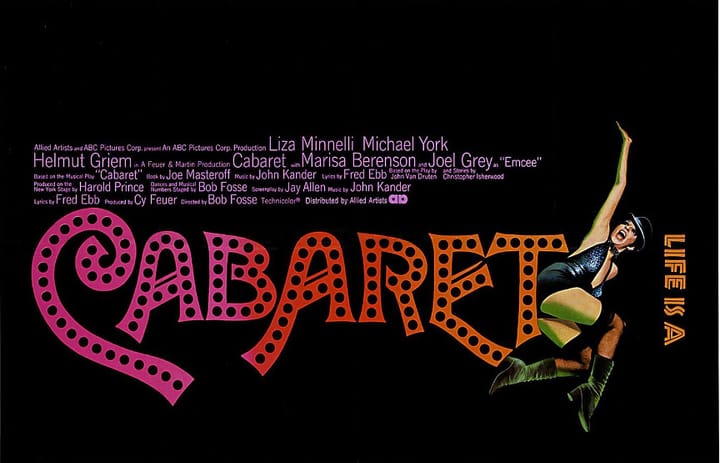Historic Photo: First class dining room of the ocean liner Grosser Kurfürst, 1905.
See how the rich dined as they made their way across the Atlantic in the first decade of the 20th century.

In the Historic Photo series, I’ve done a few chromolithographs before, such as this one and this one. Chromolithographs or “photochroms” were hand-colored high-resolution photos from the late 19th and early 20th centuries, but most of them tended to be exterior views. I was interested in this one which is a rare interior. This is the first-class dining room of an Atlantic passenger liner called the SS Grosser Kurfürst, in a postcard published by the Detroit Photographic Company in 1905. You can see this is intended as a very luxurious space. The chairs are upholstered in velvet, the walls paneled and paintings, evidently of figures from German history, line the walls. On a ship like this the whole first class cabin would probably have eaten together at the same time, meaning, this isn’t a restaurant where you walk in whenever you please and order off a menu. That would have been an a la carte restaurant, which did not make its debut on the North Atlantic until the sailing of the Titanic in 1912.
Luxurious as this was, a photo of this kind shows what the North Atlantic passenger trade was like in the early 1900s. Notice all the chairs are bolted to the deck. This is so they wouldn’t slide around in heavy seas. This is obviously “cafeteria style,” although among the best the North German Lloyd shipping line could offer. Later ships that came out right before World War I, like the France and the aforementioned Titanic, started breaking these traditions, which is why they were thought of as the last word in luxury. Still, nice as these digs are, the real money in the passenger trade was in steerage. Hauling penniless immigrants across the Atlantic was big business, and shipping lines packed them in like sardines. Third class passengers would eat in their own dining room like this one, except it would look much more like a Salvation Army soup kitchen than a floating hotel.


